Improved Quenching through CFD Modeling
By Andrew Banka, P.E. and Kelly Hile.
Airflow Sciences engineers use Computational Fluid Dynamics (CFD) modeling to analyze the inner workings of heat treatment operations. We apply our fluid dynamics expertise to the primary agents of heat transfer in these processes: the gases and liquids that fill the vessels used for heating and cooling.
What is Heat Treatment?
Heat treatment is the process of heating and cooling a metal in order to optimize its properties. Through precise temperature variation, manufacturers can customize material properties such as strength, hardness, and ductility. Controlled quenching, or cooling, is often just as important as heating. Uneven cooling can lead to uneven properties and may cause distortion because of unbalanced stresses inside the part.
CFD Applications for Quenching
Liquid quench tanks are designed to move water, polymer solutions, or oil around hot metal parts to promote cooling. The fluid motion is critical to a successful quench operation, yet the flow patterns within the tank are often unknown. Our engineers combine fluid science with numerical modeling to predict flow patterns within the whole volume of the tank.
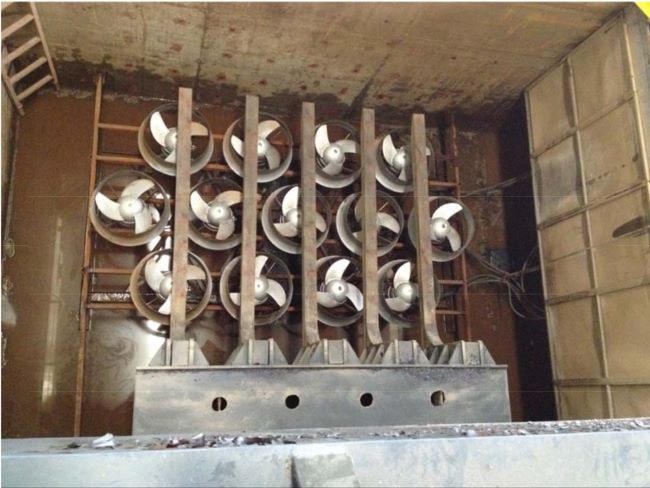
A couple of key factors are at play within the quenching process: first, the fluid must be moving sufficiently fast, and second, it must be reaching all of the parts in a given load. These are exactly the things a CFD model can evaluate.
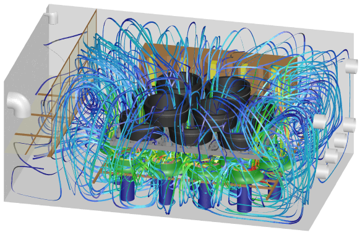
A CFD simulation takes input values like flow rate, inlets/outlets, agitators, and part racking and predicts fluid motion based on the physics of fluid behavior and heat transfer. We can then predict the fluid velocity and flow direction at any location within the tank. Our results enable heat treaters to optimize tank design or fix performance issues with confidence.
Improving Quenching Systems with Practical Modifications
Unfortunately, quench tanks are often designed without any flow analysis whatsoever. When problems arise, a full re-design of an expensive quench system is usually unfeasible. In these cases, we use CFD to find the best flow scenarios by exploring minimally invasive modifications to the system. Exploring modifications with CFD modeling means less trial-and-error problem solving. By comparing several design options, we can identify which one will have the intended effect on flow and quenching performance. Computer modeling is more cost effective than cut-and-try evaluation methods, and it puts more data into the hands of decision-makers than they would have with testing alone.
The quench tank pictured above was not designed with the advantages of CFD and as a result, had significant flow irregularities. However, our modeling found that higher flow velocity and uniformity could be achieved with a strategic change to the impeller locations, along with the addition of flow straightening devices. This practical modification was shown to provide an improved quench performance with the same input power and required minimal capital expense.
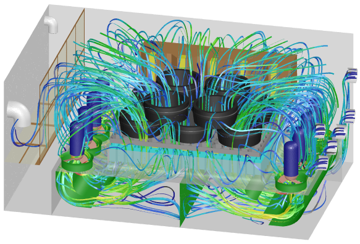
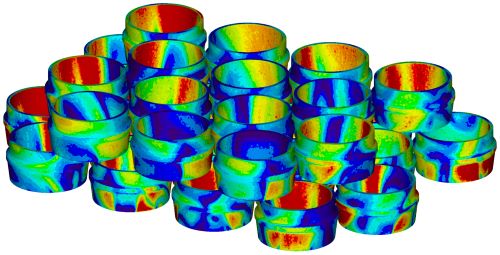
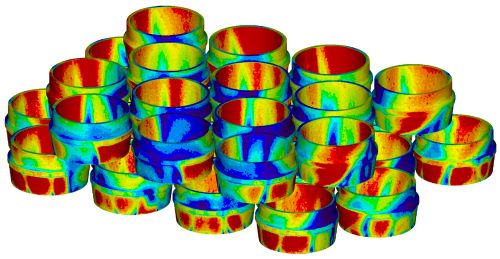
Innovative Research, Accurate Calculations
In addition to flow evaluations, we are also able to use a combination of experimental data and CFD modeling to calculate cooling rates with higher accuracy and wider applicability than other typical methods. Our models are based on innovative research in boiling heat transfer. When these models are combined with finite element analysis, it’s even possible to predict distortion and final hardness values for quenched parts.
We apply advanced scientific analysis to the quenching process so that we can bring you practical engineering solutions. Contact us today to get started on your project.
Learn more :
